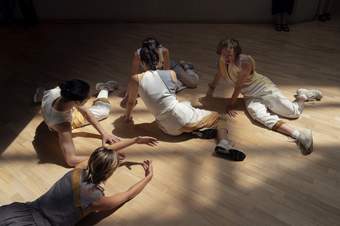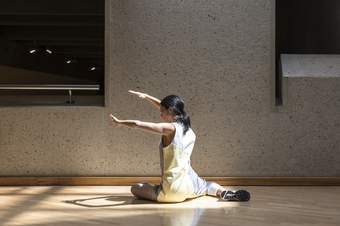Rochelle Haley is an artist engaged with painting, drawing, choreography and dance to explore relationships between bodies and physical environments. She is also a Senior Lecturer at the School of Art & Design, University of New South Wales. Haley’s approach merges visual arts and choreographic processes to investigate space, structured around the sensation of the moving body.
Shelley Lasica has shown choreographic works nationally and internationally for more than forty years. She is interested in the context and situations of presenting choreography and is a lead research associate with the Precarious Movements: Choreography and the Museum research initiative based at the University of New South Wales.
Caitrín Barrett-Donlon is a PhD candidate in the History of Art Department at University College London. Her doctoral research project focuses on the recent dance works of the prolific American choreographer, filmmaker and writer Yvonne Rainer. Alongside a close reading of these dance works and an investigation of Rainer’s ongoing choreographic practice of ‘revisioning’, the project considers the ways that experimental dance works call into question the fundamental concepts that frame museum processes.
Ana Ribeiro is a time-based media conservator at Tate. She studied Conservation in Lisbon (FCT-UNL), and subsequently trained in media art conservation at the S.M.A.K., NiMK, and at Tate, where she now works on all aspects of bringing new time-based media works into the collection. Ana’s main areas of interest are performance preservation, documentation practices, and Degrowth. Since 2016, she worked on research projects such as Documentation and Conservation of Performance, and Reshaping the Collectible.
Louise Lawson is Head of Conservation at Tate. In this role she is responsible for the leadership and strategic direction, development and delivery of Conservation at Tate. Her research has focused on the conservation of performance and dance-based artworks, with the most recent work as partner investigator in Precarious Movements: Choreography and the Museum (2021-2024).


